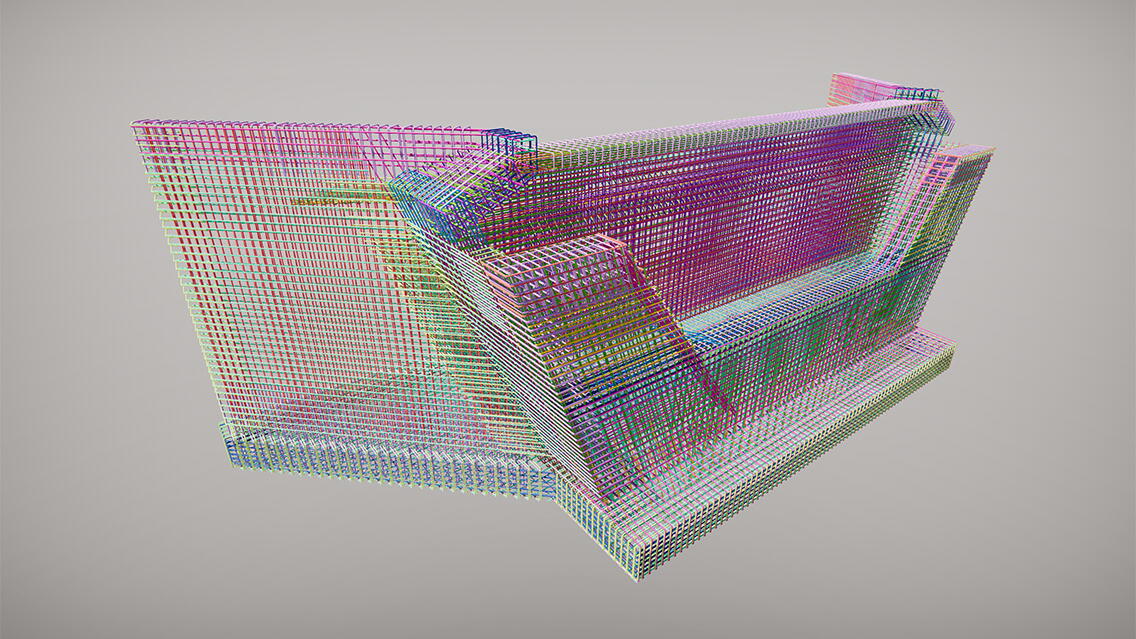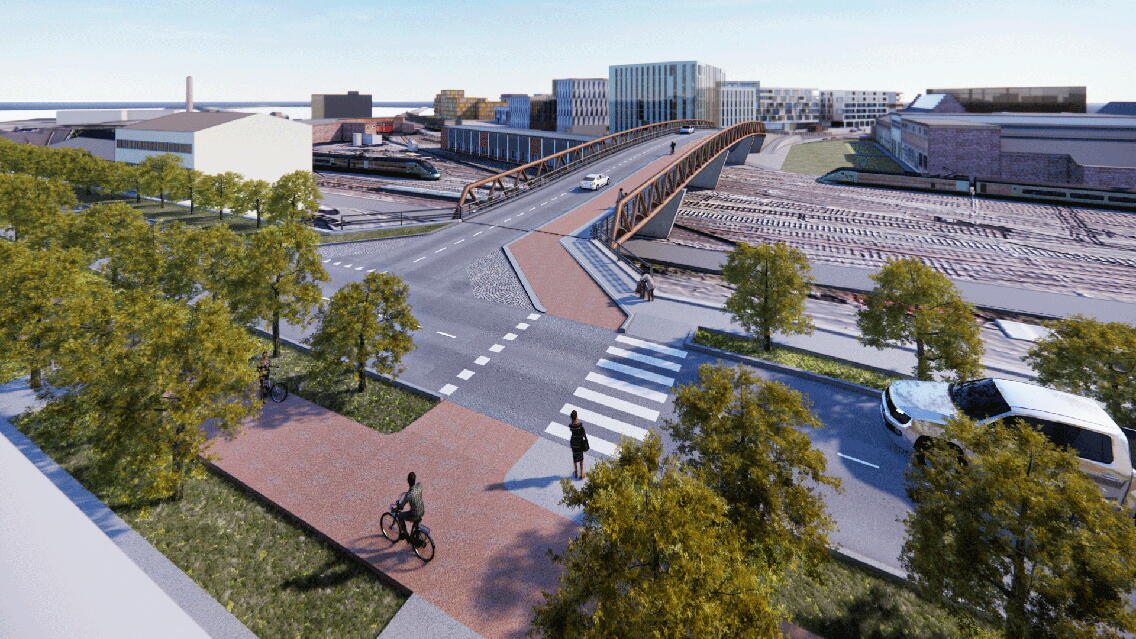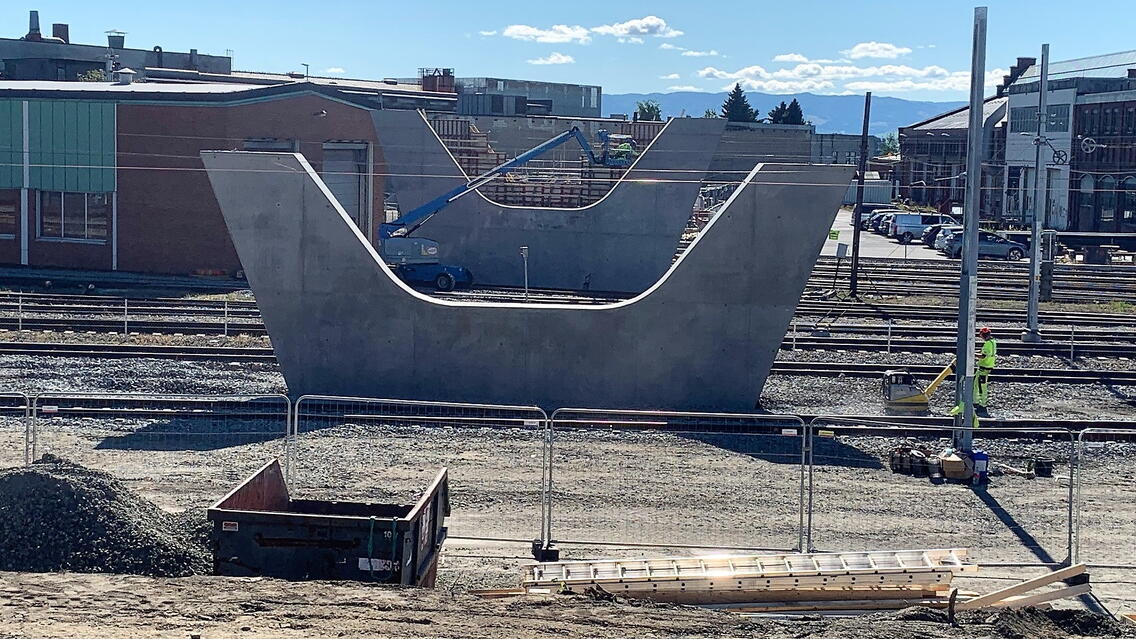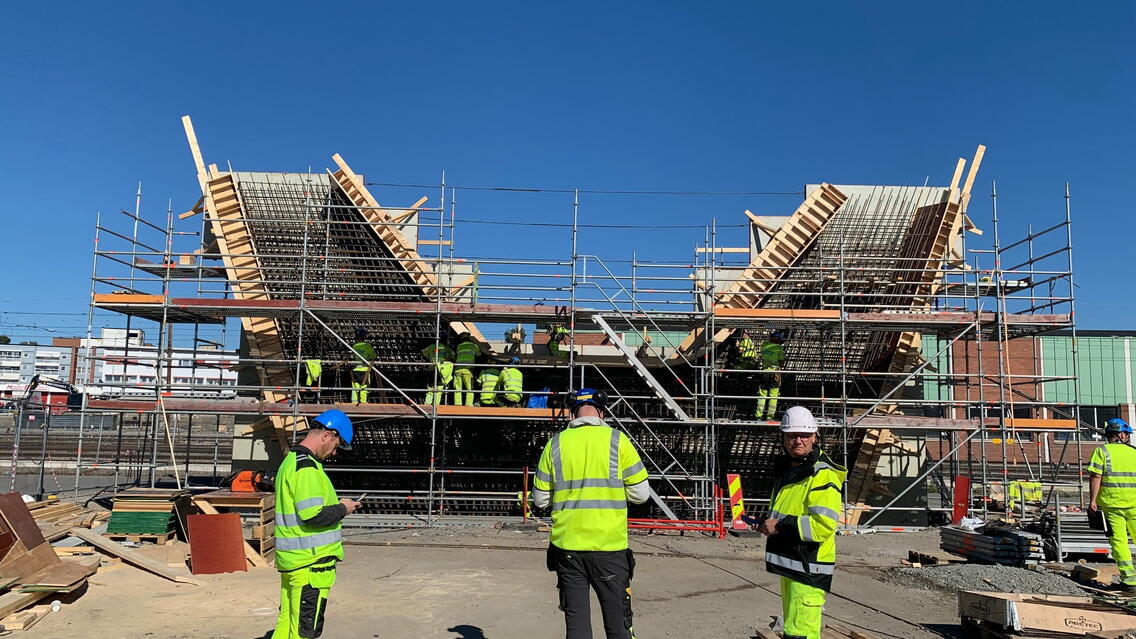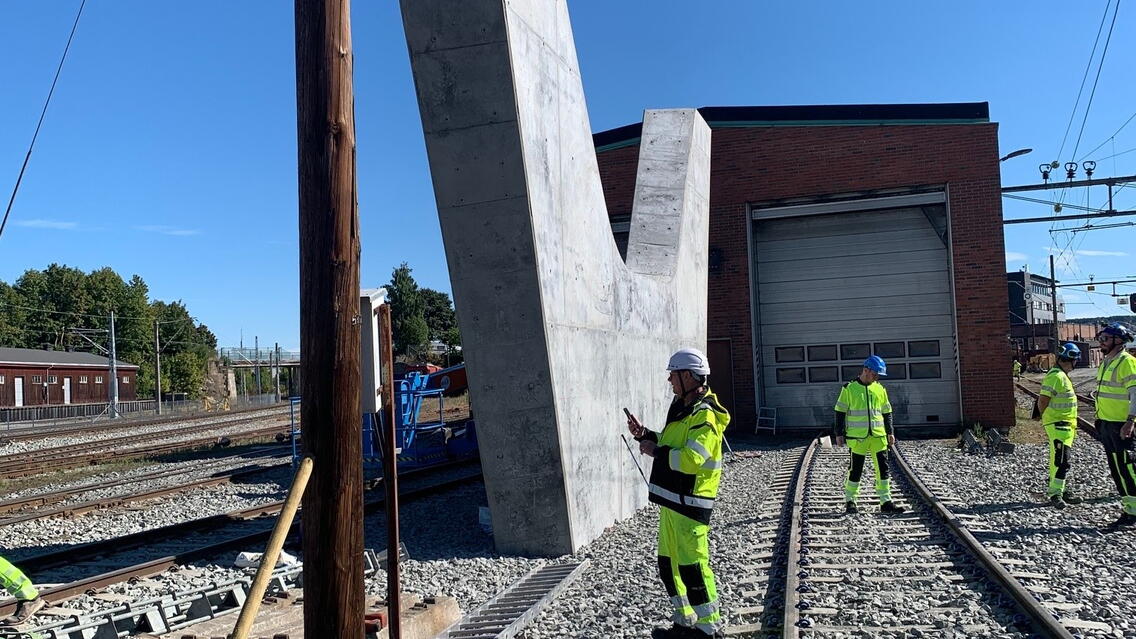Several features in the Trimble universe were utilized to enforce collaboration in designing an elegant and geometrically challenging bridge that will pave the way for an entirely new neighborhood in the Norwegian city of Hamar. Teamwork ran smoothly across countries and continents, all parties could participate, and the contractor could quickly advance the model to the production level.
The gateway to a new part of town
In the Norwegian city of Hamar, a closed-down industrial harbor area will be transformed into a lively urban neighborhood with apartments and commercial properties. However, because the area is cut off from the rest of the city by a railway line, the neighborhood needs a new transportation connection.
Espern Bru is essential to the area's urban development as it will allow transportation across the railway and connect the old industrial area to the city center. When the 119-meter-long bridge is finished, car traffic will be able to drive in both directions, and a two-way bicycle and pedestrian path will lead across the bridge.
Structural system
The complex bridge design consists of an orthotropic steel deck that, in combination with two truss girders along the sides of the bridge, makes up the load-bearing system. The loads are transferred through local joints between the deck and the truss girders and lead through pot bearings to the bridge's concrete substructure. The substructure consists of five U-shaped columns adapted to the bridge's geometry.
The substructure is mainly supported through shallow foundations. However, at the bridge's northern end, the abutment is supported on steel core piles because the load-bearing bedrock lies deeper. The abutments at the ends of the bridge will be supplied with wing walls connected to the adjoining retaining walls.
Parametric design
In the early phases of the project, the design team decided to create a parametric model through the Grasshopper-Tekla live link to accommodate the bridge's complex geometry.
The parametric model's real-time adjustability was a key factor in the design team's ability to promptly respond to incoming change requests. Scripts within the model were specifically set up for the superstructure and substructure, including pile layout.
Level of Development
The design team prepared the superstructure model to a Level of Development (LOD) corresponding to LOD350. Afterward, the Tekla model was shared with the bridge contractor, permitting seamless refinement of the model at the production level.
The design teams developed the substructure model for LOD400. This enabled the automatic generation of bending and casting schedules, resulting in close to zero waste on site. During the schedules' setup, Tekla Organizer was used as a data management tool. The model was refined concurrently with the construction, resulting in a live as-built model.
Collaboration
The preparation of the model was a collaborative effort across multiple continents, with design teams from different units in the Artelia Group contributing their expertise. Dr.techn. Olav Olsen in Norway provided the engineering design, while Artelia Denmark oversaw parametric design and 3D modeling in Tekla with support from Artelia Philippines. Tekla Model Sharing was used to its full capabilities to enable seamless collaboration.
By linking the Tekla model with Trimble Connect, the team also created a shared platform where non-Tekla users had viewer access. This proved valuable for streamlining the design workflow and reducing the need for extensive BIM technical personnel within the internal team. Automatic links to Trimble Quadri made coordination with other disciplines outside Artelia Group and the authorities possible. Clash checks and general model coordination between discipline models could be conducted in this digital environment. Furthermore, the authorities could follow the progress of the project through the models.
BIM to overcome distances and differences
As Espern Bru will connect otherwise detached areas, the capabilities of Tekla software and OpenBIM enable collaboration where neither national nor professional boundaries pose an obstacle. Those advantages were thoroughly explored and demonstrated in this project. Since Espern Bru is no simple structure, the bridge sets a convincing example of exciting possibilities for engineers and designers. We are incredibly impressed with the apparent strengths of parametric design that allow for a smooth alignment of the aesthetic vision and structural issues. Not least, this project highlights how the software offers an inclusive platform that welcomes the vast number of collaborators who need more technical skills within Tekla or BIM in general.
Project team
Client / Hamar Municipality
Contractor / HAB Construction
Bridge Engineers / Dr.Techn. Olav Olsen, Artelia
Denmark, Artelia Philippines
Road Engineers / Asplan Viak
Architect / Lund+Slaato Arkitekter

